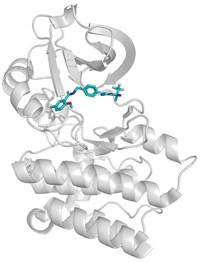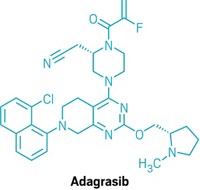Advertisement
Grab your lab coat. Let's get started
Welcome!
Welcome!
Create an account below to get 6 C&EN articles per month, receive newsletters and more - all free.
It seems this is your first time logging in online. Please enter the following information to continue.
As an ACS member you automatically get access to this site. All we need is few more details to create your reading experience.
Not you? Sign in with a different account.
Not you? Sign in with a different account.
ERROR 1
ERROR 1
ERROR 2
ERROR 2
ERROR 2
ERROR 2
ERROR 2
Password and Confirm password must match.
If you have an ACS member number, please enter it here so we can link this account to your membership. (optional)
ERROR 2
ACS values your privacy. By submitting your information, you are gaining access to C&EN and subscribing to our weekly newsletter. We use the information you provide to make your reading experience better, and we will never sell your data to third party members.
Pharmaceuticals
Clinical Data And Drug Conjugates
October 10, 2011
| A version of this story appeared in
Volume 89, Issue 41
My congratulations to Seattle Genetics on the approval recommendation for their anti-CD30 drug conjugate (C&EN, July 25, page 10). This is a complicated area of research, and they are to be complimented on the large body of important contributions they have made to the field.
However, I must disagree with a statement made in the article about Mylotarg, a conjugate I worked with for many years. There are no definitive data to indicate that Mylotarg has a significant linker stability problem; indeed, related conjugates with more stable linkers were significantly less active but not obviously less toxic in preclinical studies.
The clinical data that led to the linker instability rumor are based on a change in average loading seen over time in patients. The most obvious explanation based on all the data for this phenomenon is the more rapid clearance of higher loaded species. Mylotarg, like many conjugates, is a mixture of species that differ in the site and degree of drug loading. There are clear data on conjugates like Mylotarg and on other classes of conjugates that higher drug loading leads to shorter half-lives, which would lead to a decrease in the average loading with time in vivo.
I cannot preclude the possibility that the linker in Mylotarg has some unexpected and unexplained instability in vivo beyond the 2–3% hydrolysis per day that is predicted (intracellular hydrolysis is thought to be important for activity), but until there is direct evidence to support that claim, the data lead me to believe that faster clearance in vivo of more highly loaded species is the proper explanation for the decreasing average loading with Mylotarg.
Although there are efficacy and safety issues with Mylotarg that remain unresolved, some experts in the acute myelogenous leukemia area believe it was Wyeth’s and Pfizer’s lack of a desire to invest in the appropriate studies for a drug that serves a small patient population (10,000 cases per year in the U.S.) and that would never make a significant amount of money that was the real downfall of this drug.
By Philip R. Hamann
Thiells, NY





Join the conversation
Contact the reporter
Submit a Letter to the Editor for publication
Engage with us on Twitter